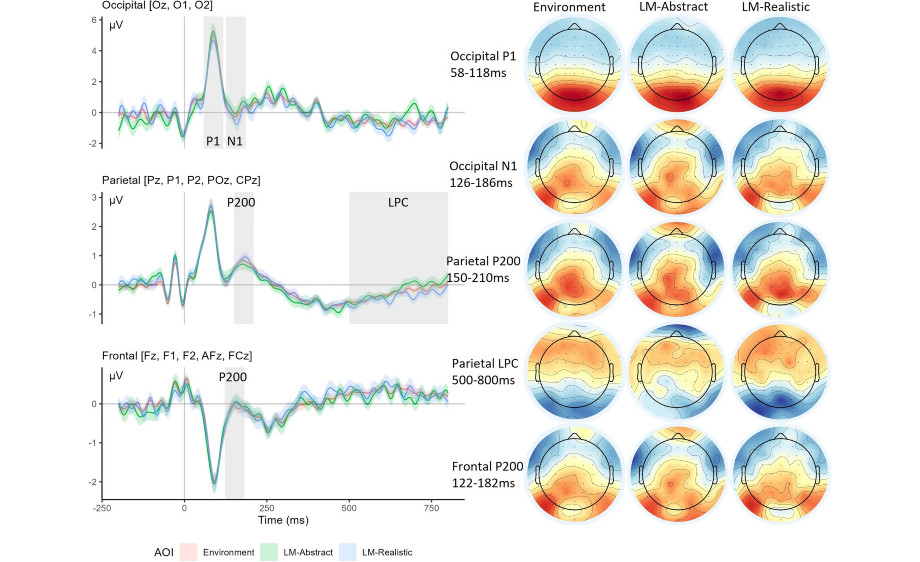New Publication
Fixation-related potentials during mobile map assisted navigation in the real world: The effect of landmark visualization style
Attention, Perception, & Psychophysics

Christopher Hilton, Armand Kapaj & Sara Irina Fabrikant
Abstract
An often-proposed enhancement for mobile maps to aid assisted navigation is the presentation of landmark information, yet understanding of the manner in which they should be displayed is limited. In this study, we investigated whether the visualization of landmarks as 3D map symbols with either an abstract or realistic style influenced the subsequent processing of those landmarks during route navigation. We utilized a real-world mobile electroencephalography approach to this question by combining several tools developed to overcome the challenges typically encountered in real-world neuroscience research. We coregistered eye-movement and EEG recordings from 45 participants as they navigated through a real-world environment using a mobile map. Analyses of fixation event-related potentials revealed that the amplitude of the parietal P200 component was enhanced when participants fixated landmarks in the real world that were visualized on the mobile map in a realistic style, and that frontal P200 latencies were prolonged for landmarks depicted in either a realistic or abstract style compared with features of the environment that were not presented on the map, but only for the male participants. In contrast, we did not observe any significant effects of landmark visualization style on visual P1-N1 peaks or the parietal late positive component. Overall, the findings indicate that the cognitive matching process between landmarks seen in the environment and those previously seen on a map is facilitated by more realistic map display, while low-level perceptual processing of landmarks and recall of associated information are unaffected by map visualization style.